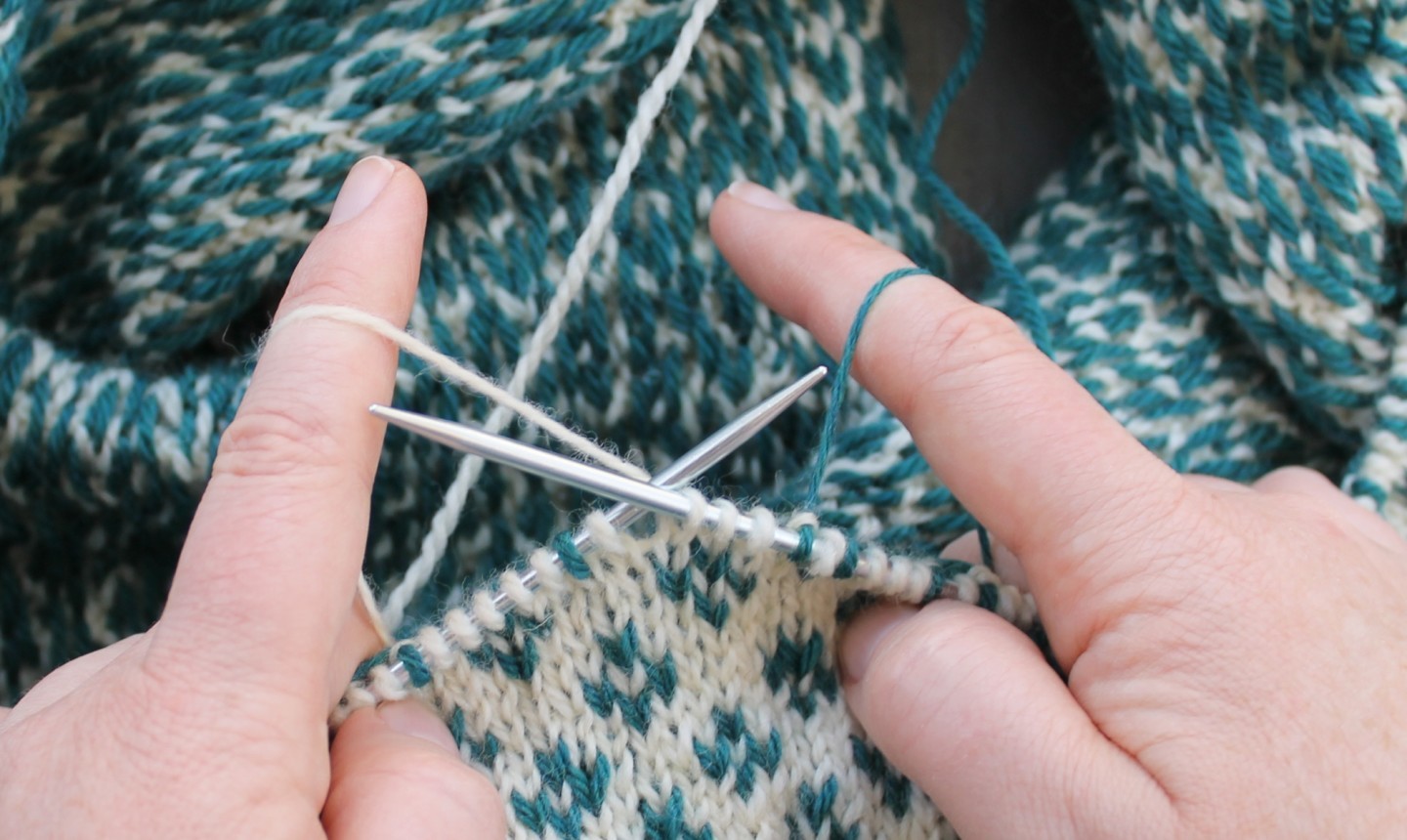
Stranded knitting uses two or more colors to create stitches. Unlike knitting big blocks of color, stranded knitting changes colors constantly, which can cause floats, puckering and general confusion, especially for those who’ve never attempted this type of colorwork before.
But don’t fret! With a few pieces of sound advice, you can avoid making common stranded knitting mistakes, saving yourself from having to rip out your project later.
1. Know How to Hold Your Yarn
How you hold your yarn is important when stranded knitting because it helps you control the tension. There are three ways you can manage it: with both strands in your left hand, both in your right, or one strand in each.
The most common practice is to hold the yarn in both hands — the right hand throws Continental-style while the left picks stitches English-style. This method speeds up your knitting, but if it feels more natural to hold both yarns in one hand, wrap one around your index finger and one around your middle finger.
2. Manage Your Floats
Floats are loose strands that appear on the wrong side of your colorwork, and if they’re too large (longer than 1″) they can snag and snap, causing your work to pucker or unravel. To keep everything tidy, it’s important to trap your floats at even intervals. There are a few different ways to do this, so choose the method that works best for you and your project.
3. Keep an Eye on Your Gauge
Gauge is vital in many knitting projects, and it’s common for stranded knitting work to end up with a gauge that’s too tight. To help deter this, use wooden needles instead of metal ones — they give you a good grip on the yarn, and help spread out the stitches as you switch colors.
Eunny Jang, instructor of Craftsy classes Choose Your Own Sweater Adventure and Lace Knitting: Basics and Beyond, says stranded colorwork knitters should also work to meet row gauge instead of stitch gauge, then block to meet stitch gauge later. “You’d be surprised at how much stranded knitting will stretch laterally without looking significantly different,” she says.
I'm going to be using 5 or more colors, What is the best method to keep from tangling? Tena Britts
That Continental/English style two-handed knitting is the way I do Fair Isle knitting too. This article is the first time I've seen anyone else mention it. It's very fast butI really have to be careful of maintaining the gauge.
Nicely done. Succinct and useful.
Just a heads-up to the author: In section 1, you have written "the right hand throws Continental-style while the left picks stitches English-style." Should be the other way around.